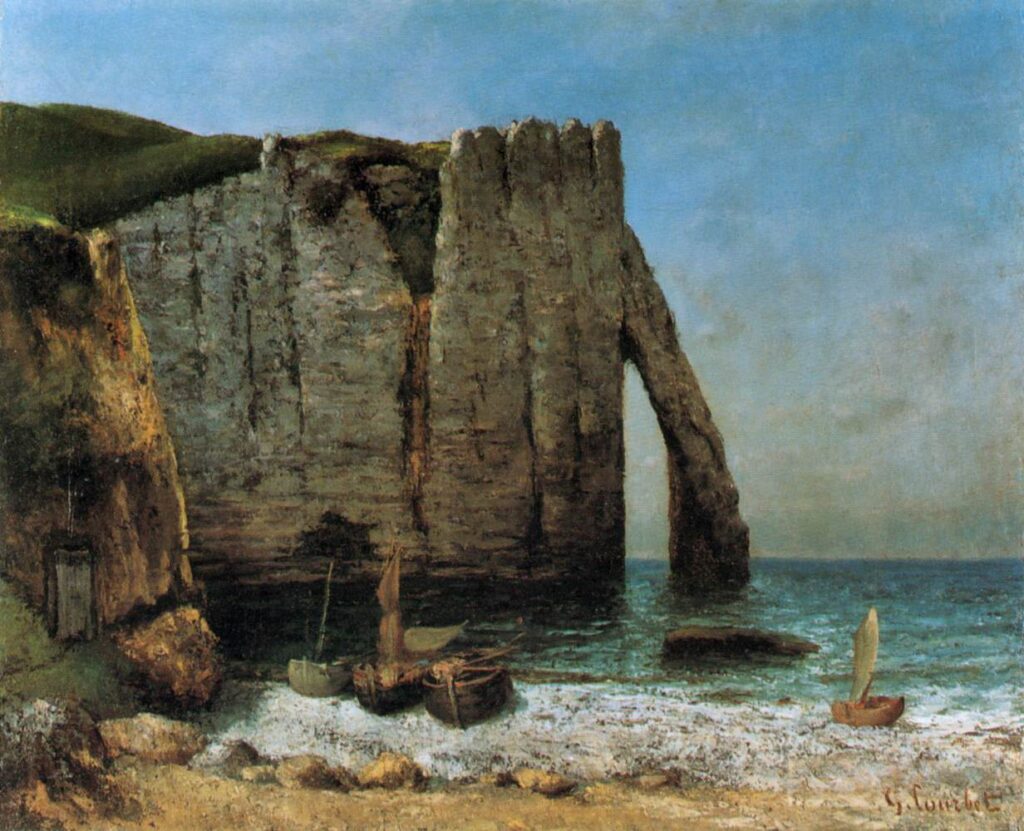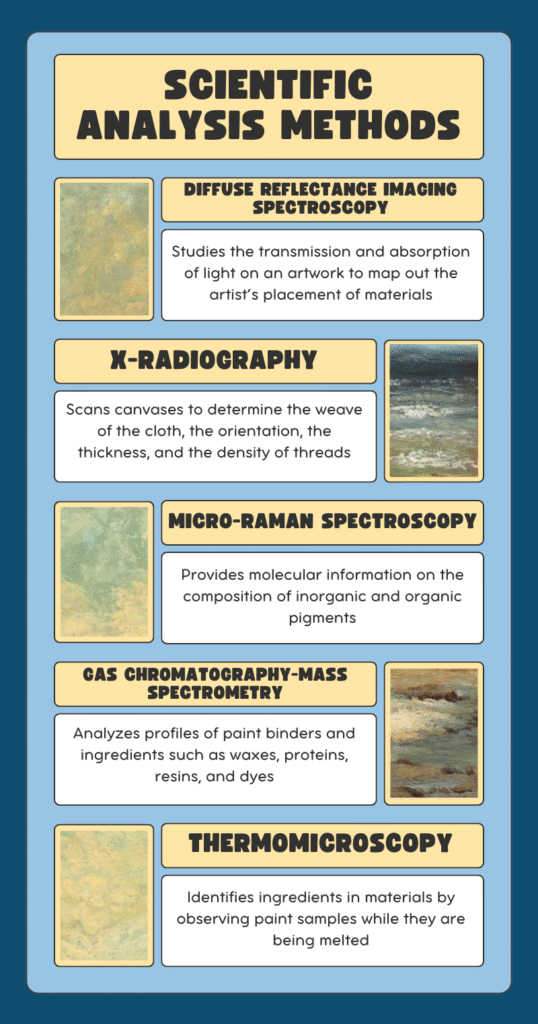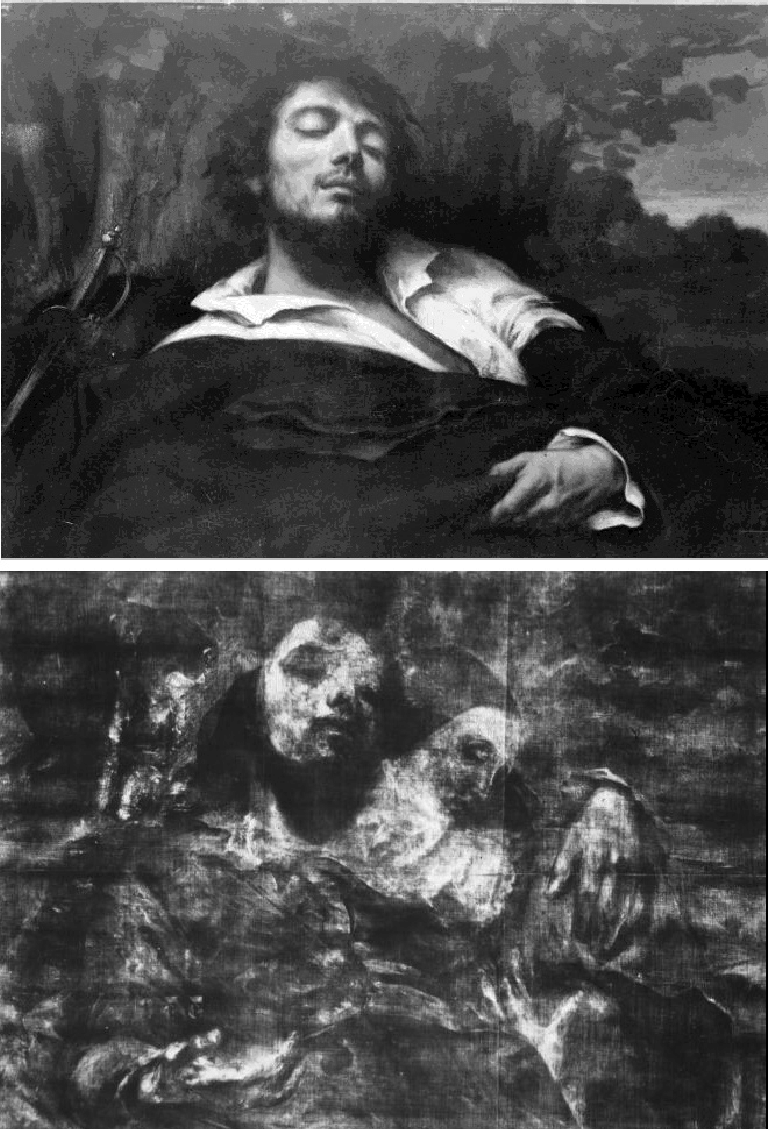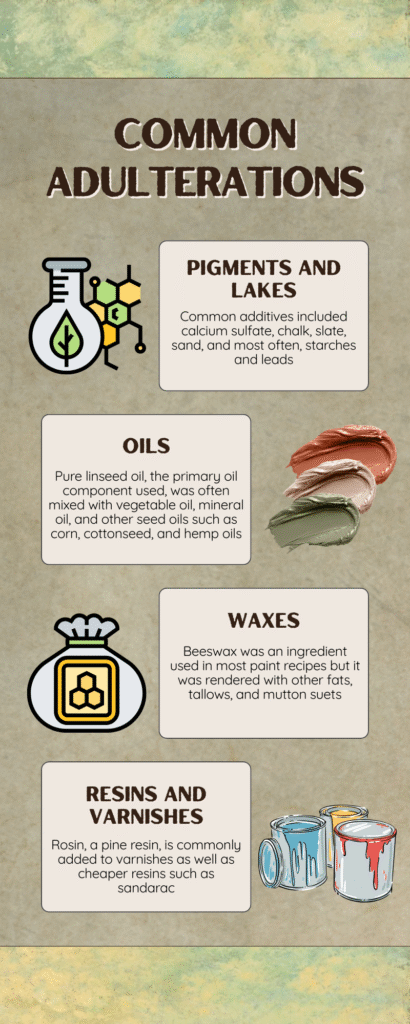Learning how your artist paints
Now that you have researched your artist and know your subject, you must learn how to paint like them. Finding this kind of information is difficult, but not impossible. For those interested in Courbet specifically, I recommend reading Courbet and the Modern Landscape by curators Mary Morton and Charlotte Eyerman. They give valuable information on how he paints each genre of painting and his techniques. Courbet painted quickly with various brushes, rags, and palette knives to obtain specific pictorial effects.

Painting like Courbet takes skill because there is a certain balance between keeping the surface smooth and maintaining the visual texture of the paints, just like he did. Putting layers of transparent glaze between your paints and scraping off excess materials accomplishes this effect. Then, use your palette knife to shave and scrape the painted surface to gain, for example, the chalky look of rocks and cliffs in landscapes. More importantly, it is time to talk about authentication methods and how to pass their tests.
Connoisseurship and Scientific analysis
The first method of authentication is called stylistic analysis or connoisseurship. A connoisseur, a professional specialized in an artist’s style, examines the techniques used to create a painting in comparison to the specific artist. I push the importance of perfecting your artist’s hand so your forgery looks identical to any connoisseur performing stylistic analysis. Passing connoisseurship should be your top priority because you need everyone to believe it is real by looking at it.
The toughest authentication method to pass is scientific analysis. Depending on the artist you are copying, it is likely that your forgery will not be subjected to scientific tests because they are expensive to perform. Still, I always take extra precautions to make my paintings as authentic as possible, just in case. To the right, you will find some standard analysis tests and what they specifically look for or identify.
The first cautionary step I take is to create each of my forgeries by hand, so researching your artist’s techniques will be very valuable. Imaging spectroscopy and x-radiography will show your entire process from start to finish, layer by layer.

Scientists also use x-radiography to date canvases and woods in frames or supports, so I always use originals from the nineteenth century. For your canvases, finding them used from antique stores or galleries is easier, and you remove the paint with thinners and bleachers yourself. For framing, I like to reference John Payne’s book Framing the Nineteenth Century: Picture Frames 1837-1935 closely, where the author gives detailed examples of frames from all over the world, including stylistic choices, creators, and even authentication stickers. It is an incredible guide to popular styles in the 1800s and what authentication stickers look like to make your own.

The most tell-tale sign of a forgery is the use of paints or ingredients that had not been utilized or created during its time. Depending on the date your painting was made, you need to be cautious about using synthetic or organic materials. Synthetic materials did not exist until 1856, and micro-raman spectroscopy can analyze the composition of your paints, determining if they are synthetic or organic. To minimize the risk of your paints being a fail point, you should make your paints from scratch.

Making your paints from scratch is more difficult, but it maximizes the control of the paint’s ingredients and color. Making them yourself allows you to create specific colors and hues to mimic the dullness and browning of oil paints caused by time. During Courbet’s lifetime, artists and manufacturers frequently adulterated materials to either increase their working qualities or replace expensive ingredients with cheaper ones to decrease production costs. To the left are the common adulterations of the main ingredients in oil paints done in the nineteenth century for your reference. Following these guidelines, you can pass gas chromatography-mass spectrometry and thermomicroscopy, which identify paint binders and ingredients.

To finish your forgery, you will need a signature. You can find artists’ signatures in their catalog raisonnes or from the paintings themselves. Any time I replicate a signature, I copy it upside down. Many artists practice drawing upside down because it allows our brains only to see shapes and lines. Therefore, we do not get distracted by the overall picture. I recommend using this technique every time to get a perfect signature that completes your painting and makes it ready to sell.